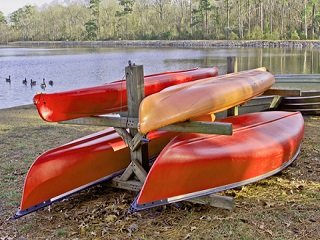 When it comes to maintaining your outdoor gear, proper storage will go a long way towards extending your gear’s shelf life, as well as its durability and integrity. I’m sure we’re all in agreement that these are vital factors. Kayaks, while constructed from durable materials and made to withstand some of the river’s roughest obstacles, can still wear down and even endure damage if not stored properly. In Part One of this series, we discussed how to protect your kayak from the elements when you’re not using it, and today we’ll continue with Part Two, in which we’ll explore the role that weight distribution plays in kayak storage.
When it comes to maintaining your outdoor gear, proper storage will go a long way towards extending your gear’s shelf life, as well as its durability and integrity. I’m sure we’re all in agreement that these are vital factors. Kayaks, while constructed from durable materials and made to withstand some of the river’s roughest obstacles, can still wear down and even endure damage if not stored properly. In Part One of this series, we discussed how to protect your kayak from the elements when you’re not using it, and today we’ll continue with Part Two, in which we’ll explore the role that weight distribution plays in kayak storage.
Most kayak hulls can (and will) actually deform or bend over time if they’re exposed to uneven weight distribution. Plastic and fabric hulls are the most susceptible to this type of damage, but fiberglass and wood-hulled boats can succumb to it, as well.
To prevent this from happening, support the boat at several points along its length, using padded cradles or surfaces that match the curve of the hull, and/or nylon straps. This will ensure that your kayak’s weight is not only distributed evenly, but will also ensure that there are no awkward points of contact that may create dents or bends over time.
There are also things you’ll want to avoid to ensure that no structural damage befalls your kayak during storage. Such common mistakes include supporting it at the ends only, standing it on its end, hanging it from its hand loops, laying it on its side for extended periods of time, and storing it too near heat or cold sources.
If you’re having trouble finding the space to adequately store your kayak properly, you can always pick up a garage storage system anywhere kayaks are sold. Great storage systems are available from companies like Thule that will keep your kayak out of the way while preventing any damage from happening.
With a long, hollow body design, kayaks can be a little difficult to find space for, let alone find a way to store properly. However, taking the time to do so will ensure that you’re able to use the kayak safely and with confidence for many, many years. When we finish the series in Part Three, we’ll discuss ways to prevent against the theft of your kayak while it’s being stored.








